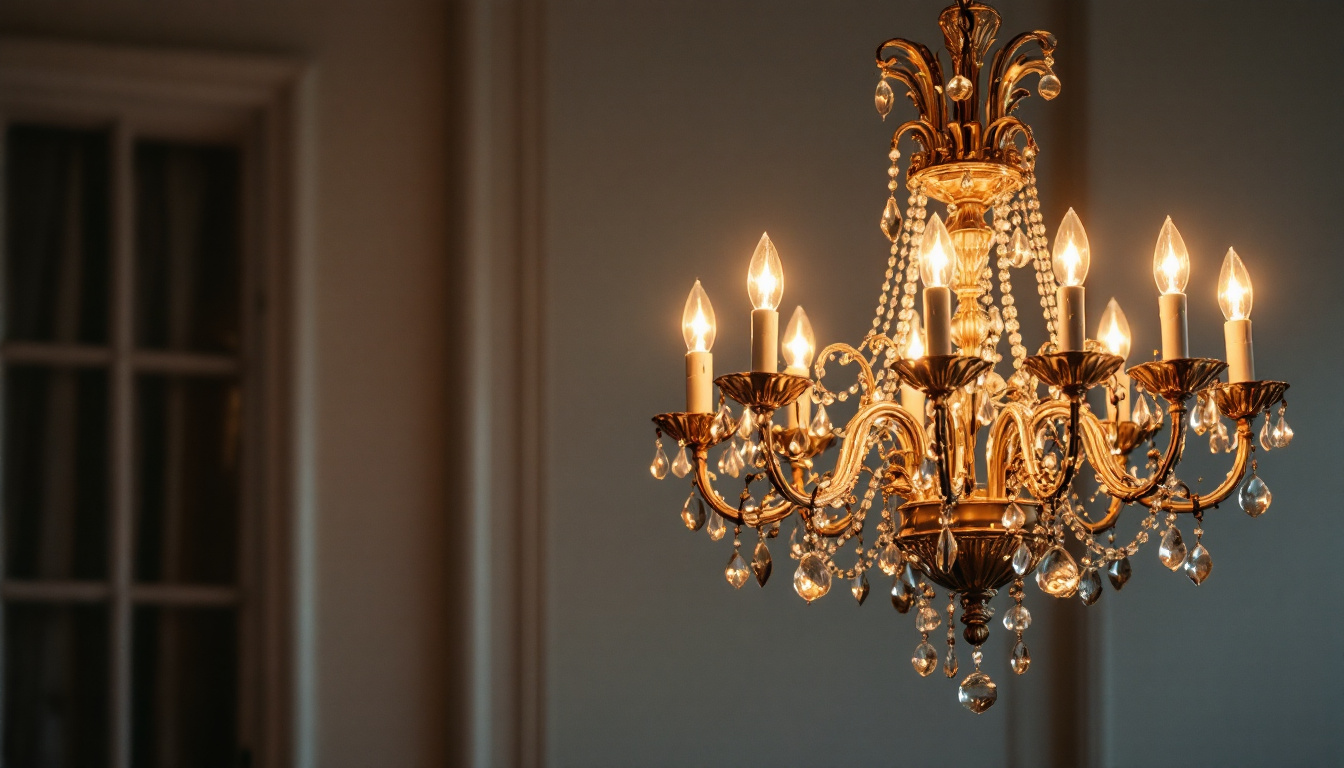

Chandelier lights have long been a symbol of elegance and sophistication in both residential and commercial spaces. As a lighting contractor, understanding the nuances of chandelier lighting can significantly enhance your service offerings and client satisfaction. This article delves into the various aspects of chandelier lights that every lighting contractor should be well-versed in.
Chandeliers have evolved from their origins as simple candle holders to complex, artistic fixtures that serve as focal points in any room. Originally designed to illuminate large spaces, modern chandeliers now come in various styles, sizes, and materials, making them suitable for diverse applications.
Understanding the historical context of chandeliers can help contractors appreciate their design evolution and the technological advancements that have influenced their functionality. For instance, the transition from candles to electric lighting has not only improved safety but also expanded design possibilities. The introduction of electric chandeliers in the late 19th century marked a significant turning point, allowing for intricate designs that were previously impossible with open flames. This shift not only transformed the aesthetic appeal of chandeliers but also made them more practical for everyday use, leading to their widespread popularity in homes and commercial spaces alike.
In the past, chandeliers were primarily found in grand estates and public buildings, serving both practical and decorative purposes. Their design often reflected the wealth and status of the owner. Elaborate crystal chandeliers, for example, became synonymous with luxury during the Baroque and Rococo periods, where they were adorned with cut glass prisms that refracted light in dazzling displays. Today, however, chandeliers are accessible to a broader audience, allowing for creative installations in smaller spaces. This democratization of chandelier design has led to a resurgence of vintage and retro styles, as well as a growing interest in artisanal craftsmanship, where bespoke pieces are created to fit unique spaces and personal tastes.
Contemporary chandeliers often incorporate LED technology, which enhances energy efficiency and lifespan. Additionally, many designs now feature mixed materials, such as metal, glass, and wood, catering to various aesthetic preferences. The minimalist trend has also influenced chandelier design, leading to sleek, understated pieces that complement modern interiors without overwhelming them. As a contractor, staying updated on these trends can help you advise clients effectively. Furthermore, the rise of smart home technology has introduced innovative features such as adjustable brightness and color temperature, allowing homeowners to customize their lighting experience to suit different moods and occasions. This integration of technology not only enhances the functionality of chandeliers but also elevates their role as an integral part of home automation systems.
Understanding the different types of chandeliers is crucial for contractors. Each type serves a unique purpose and can dramatically alter the ambiance of a space. Below are some of the most common types of chandeliers you may encounter.
Traditional chandeliers often feature intricate designs with multiple arms and crystal embellishments. They are typically used in formal dining rooms, ballrooms, and entryways. When installing traditional chandeliers, it is essential to consider the height of the ceiling and the overall scale of the room to ensure proper proportion. The use of crystals not only enhances the aesthetic appeal but also plays a significant role in light dispersion, creating a sparkling effect that can elevate the elegance of any gathering. Additionally, many traditional chandeliers are designed to accommodate dimmable bulbs, allowing for adjustable lighting that can set the mood for both intimate dinners and grand celebrations.
Modern chandeliers tend to have a more minimalist design, focusing on clean lines and geometric shapes. These fixtures can be made from a variety of materials, including metal and glass, and are often used in contemporary spaces. When recommending modern chandeliers, consider the existing décor and the mood the client wishes to create. Many modern designs incorporate LED technology, offering energy efficiency alongside striking aesthetics. Furthermore, the versatility of modern chandeliers allows them to be used in various settings, from sleek urban apartments to trendy cafes, making them a popular choice for those looking to make a statement without overwhelming their space.
Rustic chandeliers often incorporate natural materials, such as wood and wrought iron, to create a warm, inviting atmosphere. These are popular in homes with a farmhouse or industrial aesthetic. When installing rustic chandeliers, ensure that the fixture complements the overall theme of the space. The charm of rustic chandeliers lies in their ability to evoke a sense of nostalgia and comfort, often featuring designs that mimic natural forms, such as antlers or branches. Additionally, these chandeliers can be paired with Edison bulbs to enhance their vintage appeal, casting a soft, warm glow that invites relaxation and conversation. Their adaptability makes them suitable not only for residential settings but also for restaurants and lodges aiming to create a cozy, welcoming environment.
Proper installation is crucial for the safety and functionality of chandelier lights. As a lighting contractor, you must be aware of various factors that can affect the installation process.
Chandeliers can be heavy, especially larger models adorned with crystals. It is vital to ensure that the mounting hardware can support the weight of the fixture. This often requires securing the chandelier to a ceiling joist or using a suitable mounting bracket. Additionally, it is essential to inspect the ceiling structure for any signs of wear or damage before installation. If the ceiling is made of drywall or plaster, using a toggle bolt or a ceiling anchor may provide added security. Always consult the manufacturer’s specifications for weight limits and recommended installation practices to ensure a safe and secure fixture.
The height at which a chandelier is hung can significantly impact its effectiveness. A general rule of thumb is to hang the chandelier approximately 30 to 34 inches above a dining table. In entryways, the fixture should be at least 7 feet above the floor to avoid obstruction. Always consider the specific needs of the space and the preferences of the client. For rooms with high ceilings, a longer chain or rod may be necessary to achieve the desired effect. Moreover, the placement of the chandelier should complement the room’s design, drawing attention to architectural features or creating a focal point in the space. Consideration should also be given to the chandelier’s style and how it harmonizes with existing decor, ensuring that it enhances the overall aesthetic rather than overpowering it.
Before installation, ensure that the electrical wiring is up to code and can handle the load of the chandelier. This may involve upgrading the circuit or adding a dedicated line. Additionally, consider the type of bulbs the chandelier uses, as this can affect energy consumption and lighting quality. LED bulbs, for instance, are energy-efficient and have a longer lifespan compared to traditional incandescent bulbs, making them a popular choice for modern chandeliers. It’s also important to install a dimmer switch if the chandelier will be used in varying lighting scenarios, allowing for flexibility in ambiance. Furthermore, ensure that all connections are secure and that the fixture is properly grounded to prevent any electrical hazards. Taking these precautions will not only enhance the chandelier’s performance but also ensure the safety of the occupants in the space.
Chandeliers require regular maintenance to keep them looking their best and functioning properly. As a contractor, educating your clients on proper care can enhance their experience and prolong the life of their fixtures.
Dust and grime can accumulate on chandeliers, particularly those with intricate designs. Recommend using a soft, lint-free cloth or a feather duster for regular cleaning. For more thorough cleaning, clients may need to carefully remove crystals or components, ensuring they follow the manufacturer’s instructions.
Depending on the type of bulbs used, clients may need to replace them periodically. LED bulbs typically have a longer lifespan than traditional incandescent bulbs. Educate clients on how to safely replace bulbs and the importance of using the correct wattage to avoid overheating.
Selecting the perfect chandelier for a client involves understanding their preferences, the intended use of the space, and the existing décor. Here are some tips to guide your recommendations.
Begin by discussing the client’s vision for the space. Are they looking for a statement piece or a subtle addition? Understanding their needs will help you narrow down options and suggest suitable styles and sizes.
Consider the overall design theme of the home or space. A chandelier should complement the existing décor rather than clash with it. For example, a modern chandelier may not be the best fit for a traditional setting. Encourage clients to think about how the chandelier will interact with other elements in the room.
Chandeliers are more than just lighting fixtures; they are artistic expressions that can transform a space. As a lighting contractor, having a comprehensive understanding of chandelier lights—from their history and types to installation and maintenance—will empower you to provide exceptional service to your clients.
By staying informed about trends and best practices, you can ensure that your clients receive not only beautiful fixtures but also safe and efficient installations. Embrace the elegance of chandeliers, and let your expertise shine in every project you undertake.
Ready to elevate your lighting projects with the sophistication of chandeliers? Look no further than LumenWholesale for all your lighting needs. We provide contractors with an exceptional range of top-quality, spec-grade chandelier lights at unbeatable wholesale prices. With our direct approach, you avoid inflated markups and enjoy superior products that meet the highest industry standards. Plus, our hassle-free bulk buying and free shipping mean you get premium lighting at the best value — without hidden fees or compromises. Discover the perfect blend of quality, affordability, and convenience at LumenWholesale and make your next installation a shining success.

Discover essential insights for lighting contractors with our comprehensive guide on light switches.

Discover why opting for local distributors might not be the best choice when purchasing commercial sign lights in bulk.

Discover the essential insights lighting contractors need to know about exit signs, from compliance standards to innovative design trends.

Discover essential insights for lighting contractors on electric vehicle chargers, including installation tips, industry standards, and the latest technological advancements to stay ahead in the evolving market..
Get notified when NEW deals are released.
Optimize your budget with wholesale discounts.
Only top-quality, specification-grade lighting products.
No additional costs at checkout - what you see is what you pay.
We understand the unique needs of contractors.